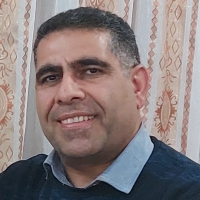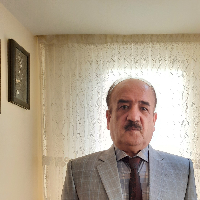Potential Assessment of Areas Prone to Geotourism Development and Providing Optimal Patterns of Visiting Geosites in Kamyaran City
The term geosite is a new concept in tourism land and is very important in understanding the geological history and historical geological evolution of a region. Geosites are landforms that have gained special value over time due to human awareness, thus creating the necessary context for the development of tourism activities and special infrastructure in an area. Geosites may exist individually or in broader perspectives. They may be altered, damaged, or even destroyed by the effects of human activities. Different regions have different potentials in terms of geosite diversity and consequently the development of geotourism depends on geological, geomorphological, and hydro-climatic factors. One of the areas that has high potential in the development of the geotourism and tourism industry is the karst areas. Kamyaran city in Kurdistan province is one of the areas located in karst formations. Kamyaran city, despite having developed karst areas, types of landscapes, rivers, and springs, has a high potential for the development of the geotourism industry and geostourism. Despite the natural conditions in the region, it seems that more attention has been paid mainly to cultural issues. Due to the importance of the issue, in this study, the geotourism situation of Kamyaran city is studied and optimal geotourism models in this city have been presented.
In this research, in order to achieve the desired goals, library information, interviews, field visits, the digital model height of 30 meters, geological maps 1: 100000 and topographic maps 1: 50000 have been used. ArcGIS and SPSS software are the research tools. Also in this research, the Kubalikova model has been used to evaluate geosites and fuzzy logic and ANP models have been used to identify areas prone to geotourism development. This research has been done in three stages. In the first stage, using field visits, interviews, and library studies, the geosites of the region were identified and evaluated using the Kubalikova method. In the second stage, 9 parameters (the distance from the river, landscape, urban areas, communication lines, cultural sites, distance geosites, altitude, slope as well as vulnerability potential) and fusion logic integrated model and AHP were used to identify areas prone to geotourism development in Kamyaran city. In the third stage, based on the results obtained from the previous stages and the location of geosites, appropriate models for visiting geosites were presented.
The results of the evaluation of geosites based on the Kubalikova model indicate that among the geosites of the region, Palangan valley has the highest score with a total of 10.25 points, followed by Gavoshan dam, and Tangivar River with 10 and 75 points, respectively. The results also indicate that the geosites of the western regions of Kamyaran city had the highest score in terms of the Kubalikova method. In this study, after evaluating geosites, areas prone to geotourism development have been identified. Based on the results, the southern and western parts of Kamyaran city due to the distribution of potential geosites, the presence of permanent rivers, proximity to cultural sites, and proximity to communication lines had a great potential for geotourism development goals. According to the results, Palangan and Tangivar River geosites have the highest potential for geotourism development goals because they have a high score in terms of evaluation methods and are also in classes prone to geotourism development. Also, in this study, based on the location of geosites in the study area, 6 patterns were presented for visiting and planning for geotourism development goals. The results of evaluating the scores of geosites obtained in different models indicate that the total averages percentage of scores of the visited geosites were 26.25, 33.75, 30.75, 23.25, 13, and 71.75 in the second, third, fourth, fifth, and sixth patterns, respectively.
- حق عضویت دریافتی صرف حمایت از نشریات عضو و نگهداری، تکمیل و توسعه مگیران میشود.
- پرداخت حق اشتراک و دانلود مقالات اجازه بازنشر آن در سایر رسانههای چاپی و دیجیتال را به کاربر نمیدهد.



